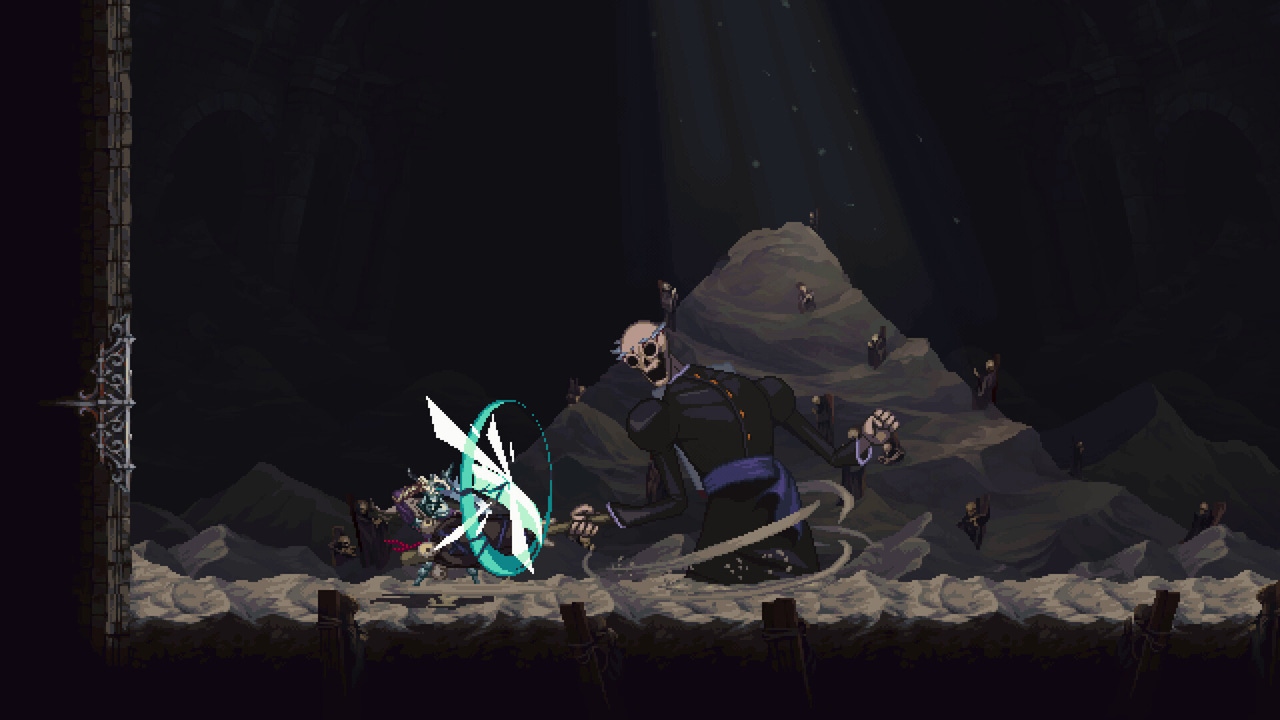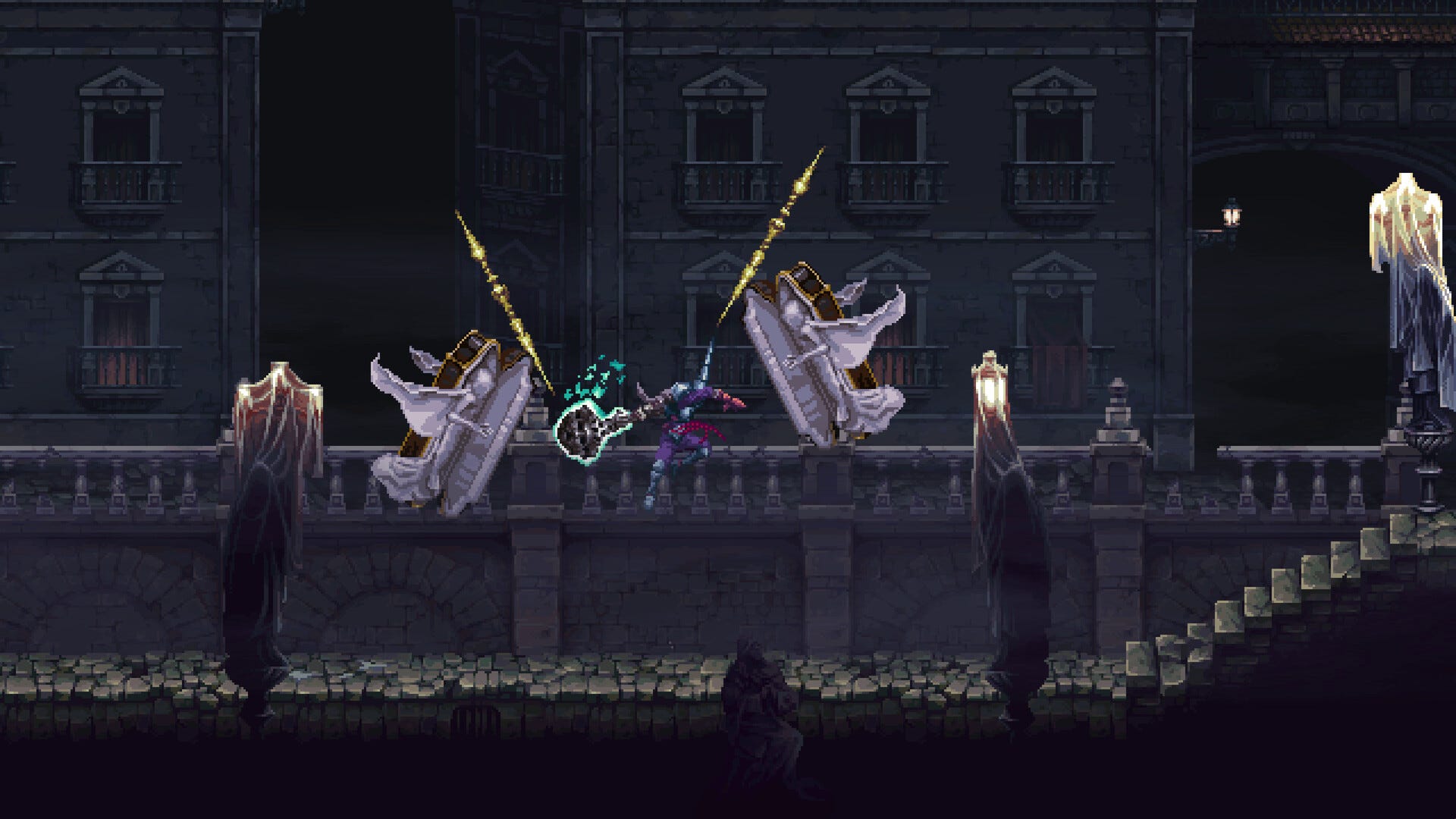Trending
Opinion: How will Project 2025 impact game developers?
The Heritage Foundation's manifesto for the possible next administration could do great harm to many, including large portions of the game development community.
The Game Kitchen talks embracing the "Metroidvania" format and bringing lost concepts back to life.

The original Blasphemous was one of many games that found crowdfunding success on Kickstarter, and the developers at The Game Kitchen would find greater acclaim upon release. Focusing on a sprawling dark pilgrimage through an unsettling world inspired by Spanish folklore and the iconography of Roman Catholicism, Blasphemous is a richly detailed 2D fantasy action-platformer that took some cues from Dark Souls and the Metroidvania genre.
Following the solid success of the original, which reached over a million players, The Game Kitchen wanted to aim bigger for Blasphemous II, which meant rebuilding the visual design of the world, revising the storytelling, and updating the entire Unity codebase in order to make a more fully realized world for the follow-up.
In an interview with Blasphemous II creative director Enrique Cabeza and producer David Erosa, they explain how lost concepts from the original game reappear here, and the reasons why their darker and more open-ended sequel needed to hit the reset button.
For the sequel, many of the concepts and innovations were "nearly impossible" to pull off for the original game. Working with publisher Team17, the developers had a more significant budget and scope to work with, which led to the decision to rework the entire game structure and art design from the ground up.
Set generations after Blasphemous' epilogue DLC The Wounds Of Eventide, the silent protagonist and cursed knight, The Penitent One, reawakens from a generations-long slumber to a radically changed kingdom of Cvstodia. Embarking on a new mission to confront powerful sentinels known as the Confraternity, who have control of the mysterious force known as "the Miracle," The Penitent One explores the new kingdom and its underground ruins, gathering the strength to survive his new pilgrimage within an even weirder world.
The sequel maintains the original's focus on exploring a sprawling world, uncovering hidden secrets and events with new abilities—all with noticeably larger production values that showcase the game's expanded scope.

"With this game, we didn't have the same budget restrictions that we had with the first game, of having to constantly worry about how much things would cost and if we could afford it," said producer David Erosa. "Because we had more resources and tools to work with after partnering with Team17, we decided to start from scratch with Blasphemous II—nothing from the original game in terms of assets was used for the sequel. That was necessary because of the new features we had for the sequel, such as the three new weapons, the more sophisticated Metroidvania abilities, and the deeper level design—those would have been nearly impossible to make with the code base we designed from the first game."
One of the original game's great successes was how it established an incredibly grotesque yet intriguing world to explore. While similar to the gothic settings of the Castlevania series, Blasphemous' macabre tone and aesthetic fueled a moody visual style and narrative focused on sacrifice and religious zeal. This setting and atmosphere made it noticeably different from most Metroidvania-inspired games, showcasing environmental detail and passive storytelling that added more flavor to its characters and world.
That idea of portraying a deeply unsettling and chaotic world for a 2D action-adventure game was fleshed out further for Blasphemous II. The original game was lauded for its richly detailed,sharp pixel art, and the sequel shows a significant upgrade, with fully animated cutscenes to enhance key story beats, along with expanded music and voice-over performances.
According to Erosa, the tight budget of Blasphemous 1 led to several content cuts—such as boss battles, additional weapons, and dungeon layouts—but with the sequel, the developers could revisit concepts left on the cutting room floor.

"There were many things we had to leave behind for the first game," said producer Erosa. "We wanted to tell unique stories and use characters with so many cultural references that resonated with us and that we wanted to show in our game, so we're very happy to see it finally be shown in the way that we want for Blasphemous II."
The rigid, stoic approach was one of Blasphemous’ most polarizing aspects, which the developers wanted to change for the sequel. In Blasphemous II, the game is more in line with a classic Metroidvania game, ditching some of the more controversial Soulslike elements from the first—such as loss of experience upon death, instant death, and the limited traversal options within the world. The jump to the sequel also includes new weapons, magic skills, and platforming abilities to enhance the core combat and traversal, to make The Penitent One a more capable and versatile fighter in the game's chaotic world.

Creative director Enrique Cabeza stated that the original game, while certainly influenced by Metroidvania games, didn't quite fit into the mold of that sub-genre.
"What we wanted to do with the sequel was to make more of a pure Metroidvania game because the original game, which had elements of it, wasn't technically a true game in that style," said Cabeza. "We really learned a lot from the first game, so we wanted to improve on everything we've done, the flow, how it feels when using a controller, the platforming, combat, and so many quality-of-life elements."
According to Cabeza, they took the community response from the game to heart when considering how to approach Blasphemous II. The decision to revise some of the Souls-style aspects of the original game was brought about due to the increased scope of the sequel and expanded development team.
"We've had the opportunity to experiment more with design with this game, because with Blasphemous 1, we just had the one core designer on the game, and we had to build gameplay systems for things we were just figuring out," said the creative director. "The sequel brought in a lot of great opportunities and with us having a larger team to build it. We had a new framework to build the game in, which allowed us to be more ambitious with Blasphemous II."
Blasphemous II is an interesting snapshot of a developer trying to follow up on a surprise smash hit, which they also believe is something of a rebirth for the series. The game is out now, and early reception from critics and fans points towards success for The Game Kitchen’s big sequel swings.
Read more about:
FeaturesYou May Also Like